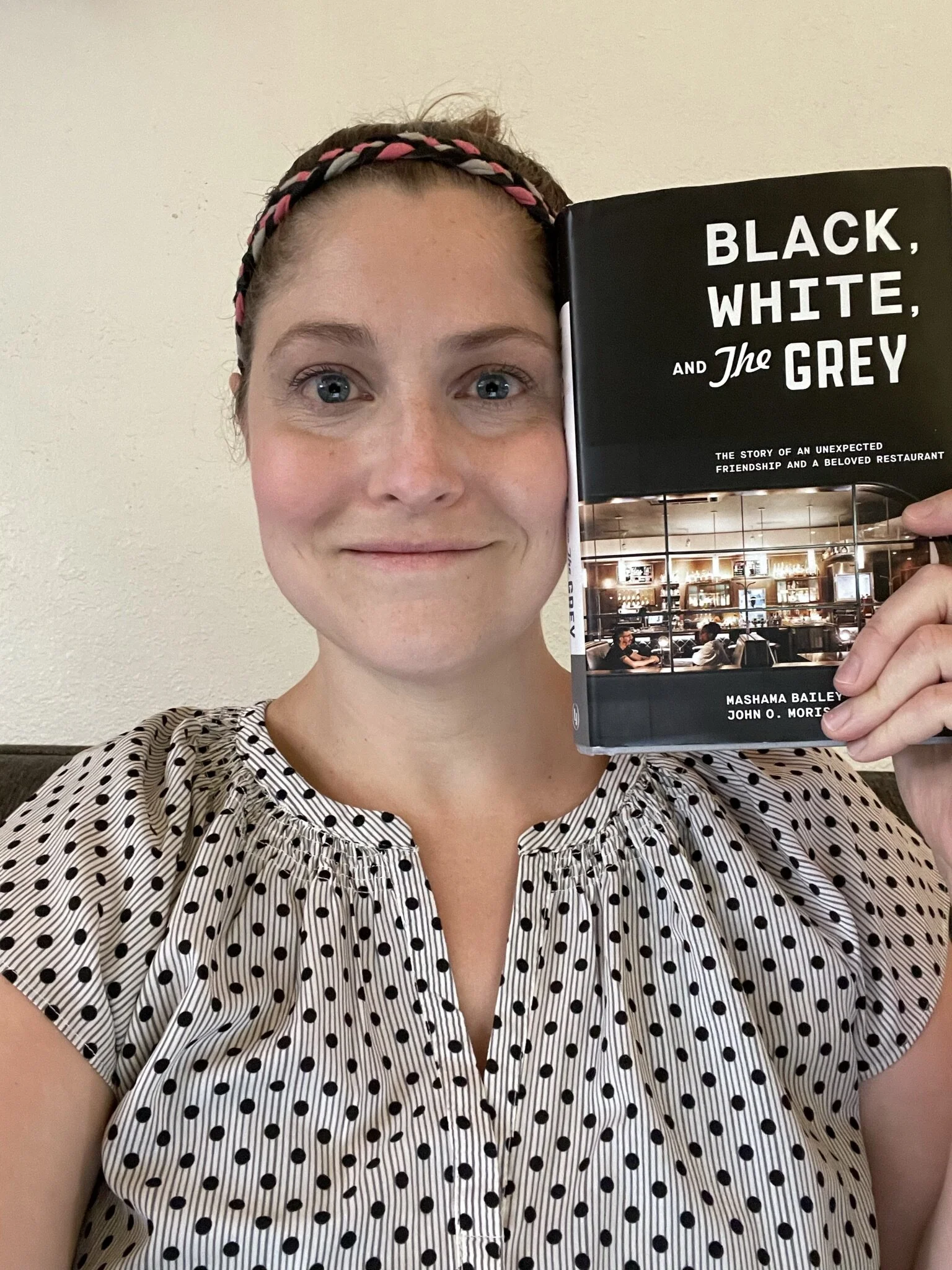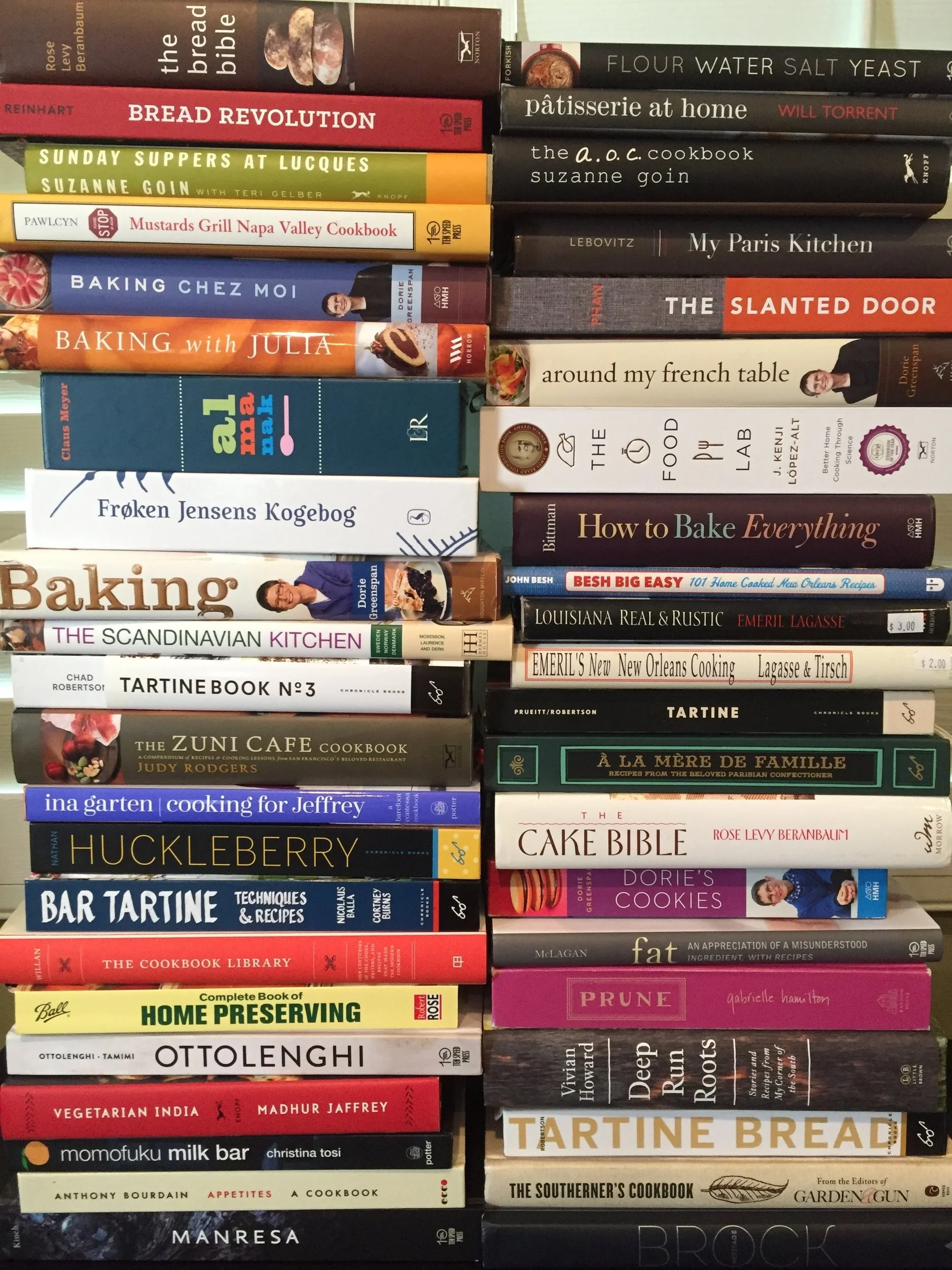Culinary Book Review: Black, White and The Grey
I thoroughly enjoyed reading Black, White, and the Grey. This culinary memoir captures the story of the Grey restaurant in Savannah, Georgia. It features the partnership of Chef Mashama Bailey and first-time restaurateur John O. Morisano, and the text shifts constantly to incorporate each partner’s perspective. I also love that there are recipes sprinkled throughout the book (but the book has left me wanting a dedicated cookbook from Bailey.)
The Grey restaurant space has an added layer of historical significance, since it was converted from a formerly segregated bus station. For anyone interested in the nuts and bolts of opening a restaurant, this book offers some insights into the challenges of that process, from construction to staffing. It frequently touches on the challenges of establishing a business relationship and the evolution of Bailey’s and Morisano’s partnership. The openness and vulnerability of both writers is pretty striking. Beyond this, the book discusses socioeconomic challenges within the Savannah community, racial injustice, and the greater context of opening a business in the South. There’s a lot to cover-- and they acknowledge in the epilogue that their goal was to offer insight into their own internal dialogues as it relates to their personal journey as partners and business owners.
As a chef who has often dreamed of opening a business, I have read many culinary memoirs, including many of the notable ones from the perspective of female chefs (including Blood Bones and Butter, written by Bailey’s mentor Gabrielle Hamilton.) Readers of this book may or may not be aware of how exceptional it is for Bailey to be in this unique position as chef partner of this restaurant venture. The restaurant industry is still in a place where it more often funds the ventures of male chefs, feeding into a cycle of more media attention, awards, etc. Reading about Bailey’s journey is deeply personal to me, as I dream of an industry that is more equitable to all chefs (and where funding is more accessible to women and minority owners). I also really appreciate how honest she was in sharing the struggles of a first time Executive Chef/ business owner, from the challenges of tastings and creating a first menu, to the discomfort of establishing herself in a new city. I feel like it’s a huge service to other upcoming chefs that Bailey was willing to share all the ups and downs of her journey-- sharing with such vulnerability takes serious guts.
I also loved hearing Morisano’s perspective as a first time restaurant owner (and overall newbie to the restaurant industry). Restaurants have their own language, and he is pretty honest about diving straight into the conversation while being super nervous about his fear of the unknown. Having worked in restaurants, I can tell you that the part in the book that every aspiring restaurant owner should focus on is when they discuss internal culture. The basic idea is that when you’re building a business, every element of the work and messaging that can be seen, touched or heard must reflect a healthy internal culture. If you’re operating or trying to operate a restaurant and you haven’t learned this concept, read this book! Understanding what they write about this might just save your business, and I wish more restaurant owners understood this. Overall, I highly recommend this book and I am waiting for Mashama Bailey’s follow up cookbook (No pressure, Chef, but I would love it!)
Please note that I have received a free copy of this book from Ten Speed Press in exchange for a free and unbiased review.





